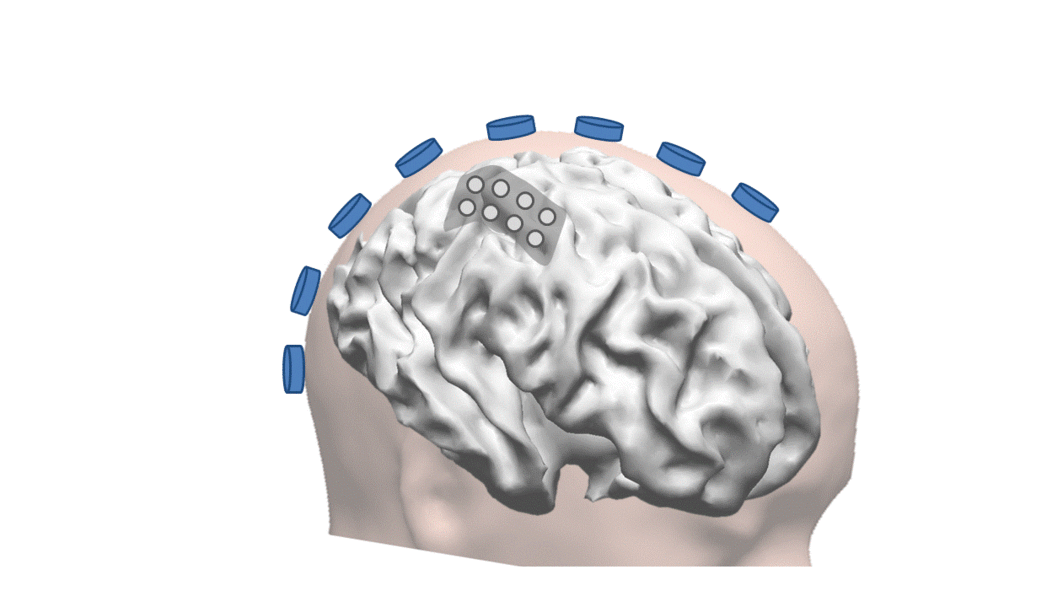Welcome to the Biomedical Functional Imaging and Neuroengineering Laboratory!
The mission of the Biomedical Functional Imaging and Neuroengineering Laboratory is to advance the state of art of functional biomedical imaging and neuroengineering through engineering innovation which will contribute to basic biomedical research and clinical applications. Research in the lab includes functional biomedical imaging (functional neuroimaging, functional cardiac imaging, and cancer imaging), and neuroengineering (neural interfacing, neural modulation, neural sensing, and neural control). A particular strength of the laboratory is its combined mission of developing advanced engineering technologies for biomedical applications and investigating biomedical systems using the techniques developed in our laboratory. With the state-of-art imaging, modulation, and interfacing systems, the lab is capable of conducting experiments to map electrical activities originating from the brain, heart, muscle, and other organ systems, to characterize and image tissue properties, and to interface human subjects with computers for neurorobotics applications. Click here for more details.
News
- Dr. He to deliver Earl Bakken Lecture at the 2024 Annual Event of the American Institute of Medical and Biological Engineering.
- Rui successfully defended her PhD dissertation on developing a deep learning based EEG/MEG source imaging approach. Congratulations Dr. Sun!
- Two PhD students recognized by NSF Graduate Research Fellowship Program. Joshua won 3-years NSF Graduate Research Fellowship. Colton received Honorable Mention award. Congratulations Joshua and Colton!
-
Zhengxiang successfully defended his PhD dissertation on investigation of high frequency oscillations of epileptic networks, and will be a Postdoc Fellow in the lab. Congratulations Dr. Cai!
- Dr. He appointed as Editor-in-Chief of IEEE Reviews in Biomedical Engineering.
-
Dr. He named a Fellow of the National Academy of Inventors for innovations in Neuroengineering and Biomedical Imaging. Read more.
- PhD student Sandhya Ramachandran received the Dowd’s Fellowship from the College of Engineering for cutting edge research. Congratulations Sandhya!
-
Lab research published in PNAS demonstrated a new way to solve EEG source imaging problem with deep learning and biophysically inspired neural mass models. The AI based technique shows superior performance in localization accuracy, source extent estimation and computational efficiency. Read the Details
- Postdoc Abbas Sohrabpour selected Distinguished Senior Postdoctoral Fellow at Athinoula A. Martinos Center for Biomedical Imaging, Harvard Medical School. Congratulations Dr. Sohrabpour!
-
Lab research published in Advanced Science demonstrated that network analysis of 10 min resting state intracranial EEG data can enable seizure localization and outcome prediction.
- Lab research in focused ultrasound neuromodulation featured by NIH HEAL Initiative. Click here for details.
- Lab ultrasound research featured by NIH NIBIB to hit neurons.
- Lab focused ultrasound research featured by Nature Communications Editors as one of the 50 best papers in the area of “From Brain to Behaviour”. Read the Details
- Lab research published in Nature Communications demonstrated that transcranial focused ultrasound has cell type selectivity in targeting and stimulating sub-population of neurons. Read the Details
- Lab research published in PNAS which discovered a novel biomarker of high frequency oscillations riding spikes to delineate epileptic tissue. Read the Details
- Dr. He featured by AcademicInfluence as a top influential engineer.
- Lab published in Nature Communications in developing a novel electromagnetic source imaging technology to accurately localize and image source extent and validating in partial epilepsy patients. Read the Details
- Lab published in Science Robotics in developing mind-controlled technology for noninvasive, continuous control of robotic arm. Read the details.
- Lab succeeds in mind control of a flying robot using noninvasive brainwaves. Work featured by Nature, New York Times, BBC, CNN, NBC, CBS, Scientific American, US News, among others. Watch the video.
